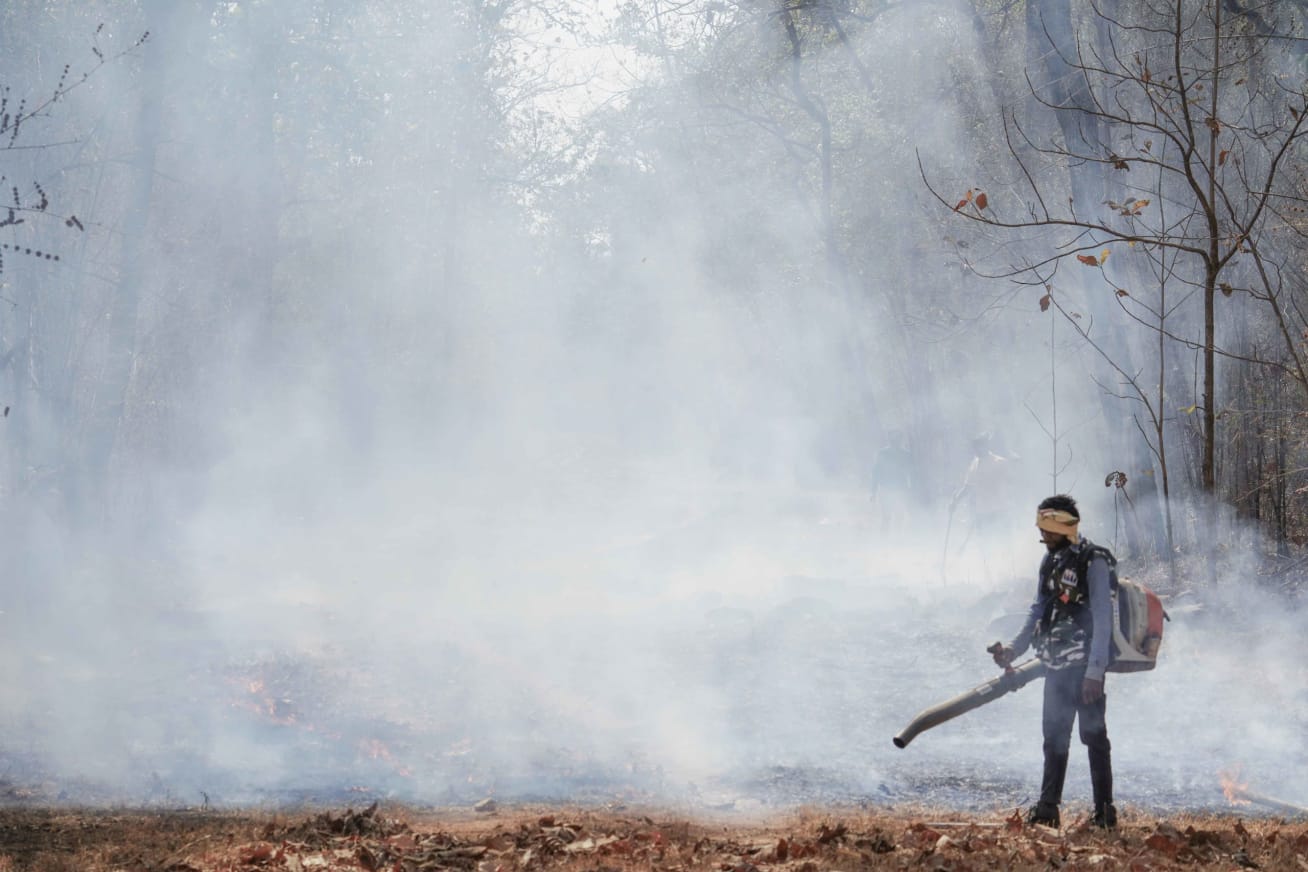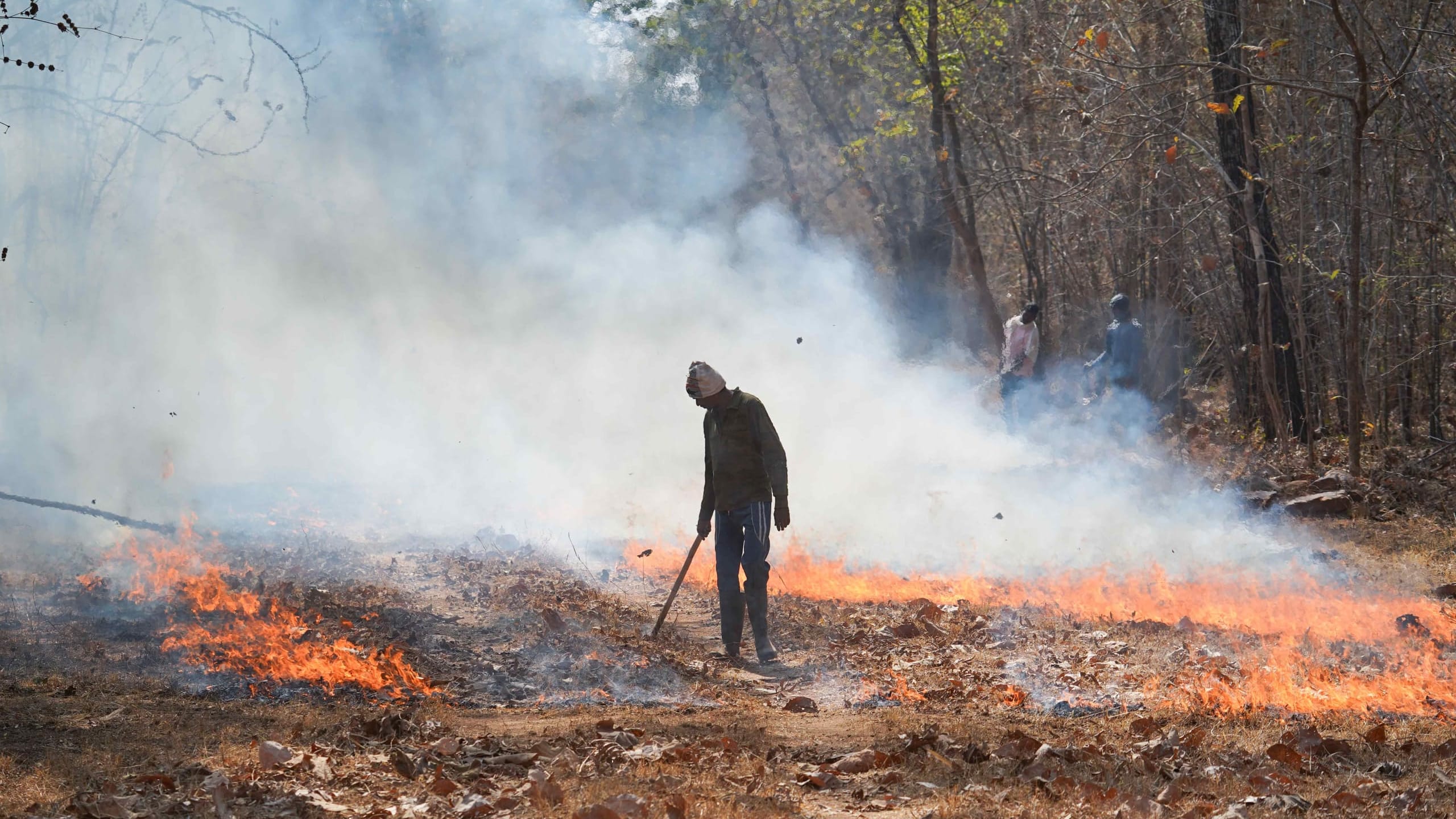 Listen to this article
•
15:34 min
Listen to this article
•
15:34 min
In January 2025, news of the “Hughes Fire”, a wildfire that started in Los Angeles County, dominated the news cycle. Within an hour of being detected, the damage escalated from 50 acres to about 5,000 acres. Before the day (22nd January) ended, the damage had soared to more than 10,000 acres, and it took the firefighters in the county over four days and a massive mobilisation effort over ground and air to finally contain it. The Hughes Fire was one in a series of wildfires in California which claimed the lives of 28 people and endangered many wild species.
While the California wildfires received a lot of news coverage, forest fires are not a problem limited to the western United States. Wildfires are a global phenomenon, and India is no stranger to forest fires. According to the Forest Survey of India, more than 50 per cent of the country’s forests are prone to forest fires, and about 2.4 per cent are prone to frequent and severe forest fires. In 2016, forest fires in Uttarakhand state claimed the lives of 7 people and damaged 4,000 hectares of forests. Forest fires damage people’s lives and livelihoods and cause irreparable damage to forests and wildlife. They are one of the most pressing challenges facing forest managers in India.
Cover Photo: Fire watchers burning a fireline in the Kolsa range of TATR. All the dry fuel on the forest bed (leaves and grasses) is exhausted during the process.
Forest Fires in Central India
Large expanses of dry deciduous forests mark the forests in Central India. During the dry season (December to May), the forest bed is covered with dry leaf litter and dried grasses. The dry forest bed, lack of moisture in the air, and soaring summer temperatures make a perfect recipe for disaster; a small spark can set the forest ablaze. This spark often comes from a beedi/cigarette casually and thoughtlessly tossed into the forest. Forest fires in Central India are often caused by human error and frequently start from the roadside. Once a fire is lit, the dry biomass on the forest floor fuels the fire, and within hours, the fire spreads across large swathes of the forest. These forest fires are usually impossible to put out manually unless detected fairly early.
From 2001 to 2020, Central India experienced an average of approximately 3,800 fire incidents per year during the dry season. These are staggering numbers and place Central India as one of the hotspots for forest fires in the country. These forest fires severely affect human well-being, forest health, and wildlife conservation. Naturally, managing forest fires is pretty high on the list of things that the forest department needs to be cognizant of. So, how do state forest departments in Central India mitigate and control forest fires?

Firelines – What are they, and how do they work?
In most cases, putting out a forest fire is fairly difficult, so the most feasible strategy is to minimise the damage caused by restricting it to a smaller area. For this, forest departments rely on structures called “firelines”. A fireline is a strip of land between two forest patches from which all flammable vegetation (leaf litter/dry grasses) has been cleared out, creating a break between the two forest patches that stops the fire from spreading from one patch to another. When a fire approaches a fireline, and there is no dry biomass to fuel the fire, it cannot cross over and eventually dies down, limiting the damage to a restricted patch in the forest. In a Central Indian reserve like Tadoba-Andhari Tiger Reserve, where there is a persistent risk of forest fires during the dry season, the forest department has developed a network of firelines that run through the reserve, cutting the reserve into smaller actionable forest patches. Firelines are also cut parallel to roads because many fires start there.
Ironically, firelines are cut out using fires! Preparing firelines is an annual exercise that the forest department has to carry out leading up to the driest phase of the year. By December, roadsides and firelines are covered with tall, dry grasses that can act as the perfect catalyst for a forest fire. So, the first step is to chop and clear these tall grasses from roadsides and firelines. The next step is to burn all the biomass from the forest bed along the firelines. This involves setting the forest bed ablaze and controlling the direction of the fire with handheld blower machines (these machines exert a strong, concentrated gust of wind). Once the intended stretch is burned, the flames are put out using the same blower machines. Voila! Your fireline is ready to combat forest fires.
Other Fire Management Strategies
Seasonal Fire-Watchers
Every year, during the dry season, state forest departments hire hundreds of fire watchers to enable the early detection of fires inside the forest. Fire-watchers are a class of daily wage workers employed specifically to help out with the preparation of firelines and the field-based monitoring of fire situations. Fire-watchers are stationed across the forest and spend the day in machans monitoring their surroundings for any signs of a fire. In case they spot signs of a fire, they are the first responders. Fire-watchers are generally hired from February to June.
Fire Control Room
Another precautionary practice in TATR is to set up a fire control room in the reserve during the dry season. This room functions as a centralised unit that disseminates all information regarding a forest fire in the reserve. It is staffed and operational 24/7, with employees continually monitoring the landscape for fires. The control room is set up to function in tandem with the NASA-based Fire Information for Resource Management System (FIRMS). FIRMS is a global satellite-based system that uses remote sensing to detect fires in real-time. TATR has subscribed to this system, and whenever the satellites detect a fire within this landscape, the system sends out a fire alert, and information is relayed from the fire control room to officers, who can take a call on whether some action is needed.
How you can help
If you’re someone who loves the Central Indian forests and want to contribute to forest fire management in this beautiful landscape, here are a couple of things you can do as a concerned citizen:
1. Be mindful of your surroundings! Littering is always a no-no, but if you’re someone who likes a casual smoke, be sure to snuff out the butt before disposing it safely in a trashcan.
2. If you spot a forest fire, inform a local forest department official so they can take appropriate action. Alternatively, contact the national forest fire helpline at 1 800 119 334.











